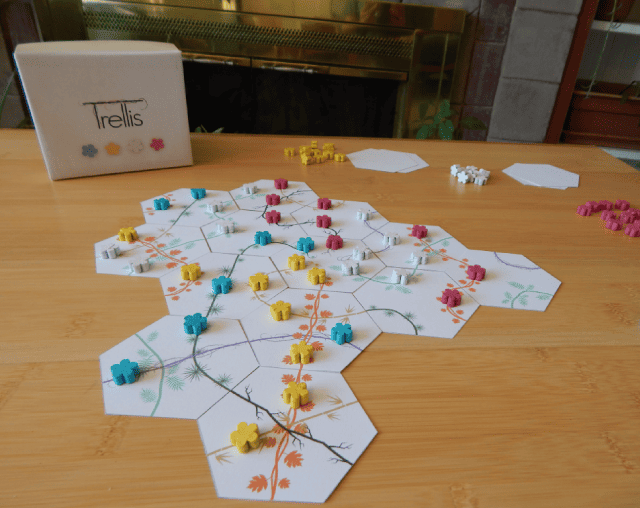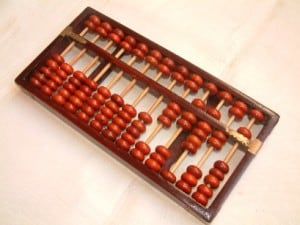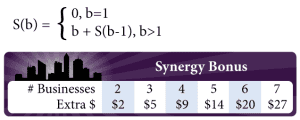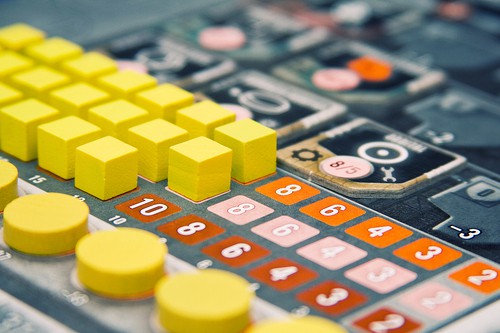
If you’re like me, you’re a total math nerd. Not all designers approach games from a mathy perspective, but many do. I love solving the math puzzles in games (I’m the guy who says my final score first, looking smug), and when I started designing I knew I wanted to create similar puzzles for others to play with.
But it didn’t take me long to discover that, while many designers are math nerds, far fewer players are. In fact, many players actively dislike math. It feels like a chore to many people, and presents an opportunity for saying something wrong and feeling embarrassed. Not all players feel this way, of course, but as I’ve playtested with many people, I’ve realized a lot more people dislike math than I could have imagined. Ultimately, this means that if your game involves much math, you’ll be alienating a lot of people and shrinking your game’s potential audience.
Yet many games have math at their very foundations. Players don’t want to be faced with math, but games require math to be fun and interesting. How can a designer reconcile this conflict?
One thing you can do is to keep the math simple. Avoid multiplication except doubling. Avoid division altogether. Don’t make players add too many numbers at once. Keep numbers small and round.

An abacus. Image from Wikipedia.
Another thing you can do is take inspiration from the abacus. Before there were calculators, before Google would just tell you the answer to your math question, people used physical tools that would solve math problems for them. These tools assisted people in two main ways:
Performing computations. By physically manipulating the tool, it would provide the answer to a math problem, freeing the user from doing the computation him or herself.
Aiding memory. People can generally only keep a few pieces of information in their memory at once, so it can be difficult to keep track of everything in multi-step math problems. Math tools can assist people by using physical state to keep track of important information, relieving them the burden of tracking every little detail.
Now, obviously including an archaic machine with your game isn’t going to work. Learning the rules to a game is difficult enough; you can’t expect people to learn how to use even a simple calculating machine to play the game. But there are many ways you can turn the game itself into a calculating machine, helping your players perform math without them even realizing it.
Tracks. Used for scores more than anything, tracks are a great way to save state, as well as help players perform complex addition.

The synergy bonus from Corporate America as a formula and as a table. Which do you think players would prefer?
Tables. Even a simple curve is probably better presented to players as a table rather than as a formula. Triangular numbers, the Fibonacci sequence, a quadratic or exponential curve… these all have their places in games, but players never need to know that. They just need to know where to look to find the right number in the series.
And if you really want to be fancy, you can follow Eclipse‘s lead and only reveal relevant parts of a table as a natural part of playing the game.
Tables from Eclipse use game pieces to show only relevant information. Image from Board Game Geek.
Tokens. Tokens can be a great way to keep track of game state, as well as assisting with many types of computation. Perhaps what tokens do best is turning other types of math problems into simple counting problems. This is especially true when different denominations allow chunking, or turning problems with many pieces into smaller problems with fewer, larger pieces. For example, if you have tokens worth 1 point and tokens worth 10 points, counting up to 52 becomes a problem involving 7 components (5 tens and 2 ones) instead of 52 components.
Transferring Domains. Sometimes, a math problem doesn’t have to involve math at all. For example, fellow Leaguer Scott Caputo brought up the example of stacking chips in Poker, where instead of counting out chips to know you have an equal number, players often stack chips and compare height. This turns a math problem into a perception problem, something that’s pretty easy for most people. Who says math needs to involve numbers?
For my upcoming game Trellis, I took the challenge of eliminating math problems to heart. The game features a very minimalist, zen aesthetic, and I wanted that to
permeate through the whole experience. Tokaido has a similar vibe, but ends with a huge math problem blindsiding the players as the final experience; I wanted to avoid that. To make sure players had to worry about numbers as little as possible, everyone starts with the same number of tokens (color coded, so you don’t even need to count them!), and whoever uses all of her tokens first wins. The game is effectively a race to 15, where moves generally give players 2-4 points each, but players almost never think of the game that way because all of the math is handled for them behind the scenes. I’ve been very happy with how this trick has helped eliminate potentially unthematic and frankly unpleasant experiences from the game. It’s looking like the game will come out in spring 2017, so keep an eye out for it!
Today I’ve covered just a few tricks for hiding math in the components of games, shielding players from it. But there are lots of great examples out there. Can you think of any clever ways designers were able to include math without putting the burden on the player? Let me know in the comments!









